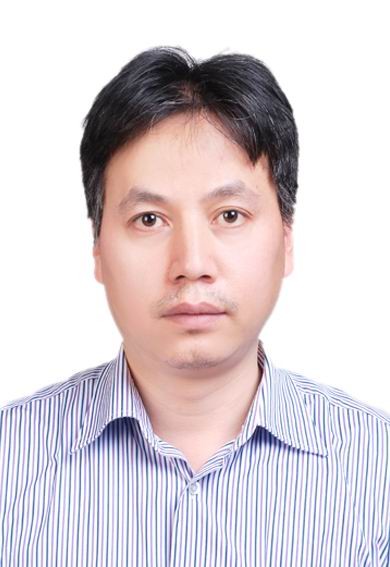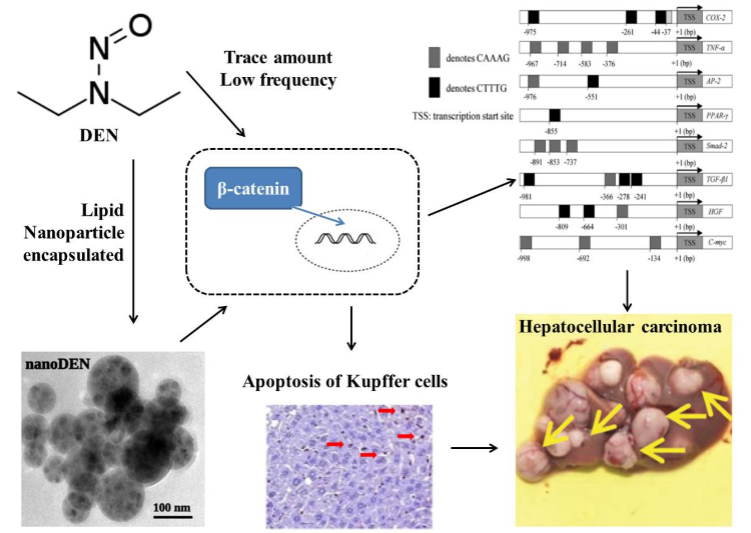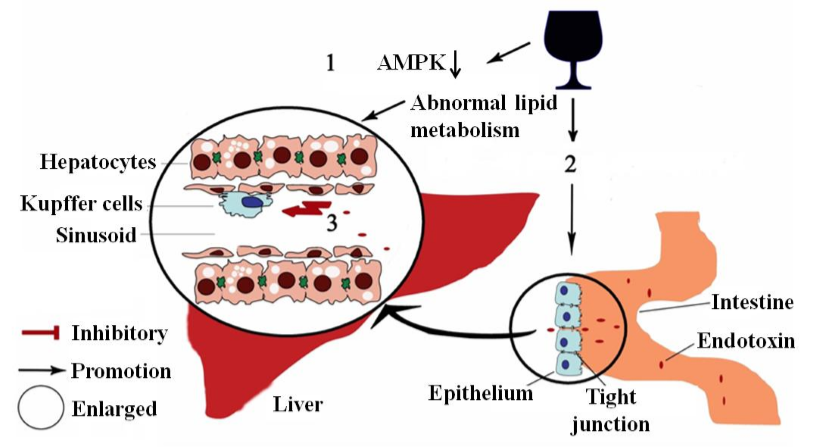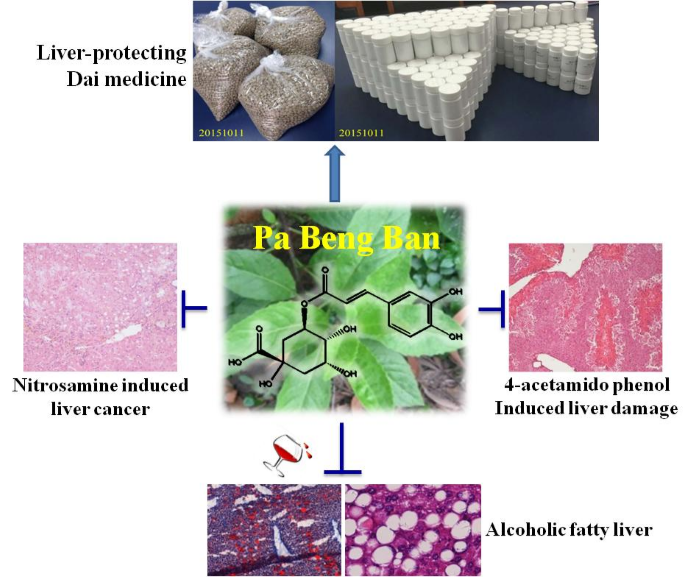- Research Team
Team leader

He-Bin Tang, PhD in Pharmacology, Professor
Birth date: 1970.11
Ethnic: Han
Research field: Pharmacology
Tel: 86-27-67842332
E-mail: hbtang2006@mail.scuec.edu.cn
Graduated from Hunan University of Traditional Chinese Medicine, He-Bin Tang received his Bachelor degree of medicine in 1996. In the same year, he entered Zhuzhou Traumatological Hospital of Traditional Chinese Medicine, Hunan, as an ENT doctor. During September 1998 and March 2005, he stayed in Hiroshima University of Japan, and received his PhD degree in Pharmacology. He then served there as an assistant professor in the School of Pharmaceutical Sciences, Hiroshima University until March 2009. During that period, he got 2 Natural Science Funds from Japan and cooperated with large companies such as Taiho Pharmaceutical Co. Ltd and Kyowa Hakko Kogyo Co. Ltd. in 4 projects of drug developments. In April 2009, he returned to China and became a professor at South-Central University For Nationalities. Since then, he has been mainly engaged in the research of combining traditional Chinese and Western medicine in the prevention and cure of liver diseases, and has developed several products including live-protecting preparation, multi-target hypoglycemic agent and skin oil, all of which have been authorized invention patents of China. He also finished 17 research funds at all levels including funds from NSFC and others. Over the years, he published about 60 papers in research journals such as Journal of Agricultural and Food Chemistry, InternationalJournal of Nanomedicine, Neuropharmacology and Toxicology Research.
Introduction of the team
Liver diseases has been a serious harm to our physical and mental health in China. Since 2009, our team investigated the pathogenesis of acute and chronic liver injuries caused by alcohol, drugs and toxins in the axis of regeneration and inflammation (β-catenin and COX-2 regulatory loop). Focusing on the analysis of pharmacology and material basis of ethnic drugs, we developed a series of liver-protecting drugs from traditional medicine such as Gynura procumbes (Lour.) Merr. We have undertaken 8 funds from NSFC, 1 each of 973 and 863 of the national science and technology fund and 20 more other funds including ministerial and provincial. To date, more than 20 SCI papers have been published, a series of new products which are effective in protecting liver and treatment of diabetes have been produced, 3 invention patents of China have been authorized. We have provided and are providing new technologies and scientific methods for clinical treatment of acute and chronic liver diseases.
Team members
Yu-Sang Li, Professor,
tel: 86-27-67842332, e-mail: liys2006@mail.scuec.edu.cn;
Wei Kevin Zhang, Associate Professor,
tel: 86-27-67842332, e-mail: wkzhang81@139.com;
Xiao-Jun Li, Lecturer,
tel: 86-27-67842332, e-mail:xiaojunlixiaojun@hotmail.com;
Research fields
(1)The formation of primary liver cancer;
(2)The progression of alcoholic liver disease;
(3)The development of liver-protecting ethnic medicine;
Research interests
(1) The formation of primary liver cancer: primary liver cancer is one of the most harmful carcinomas with high incidence in China. The etiology and detailed molecular mechanism of it is still unclear. It has been widely accepted that primary hepatocellular carcinoma is a multi-cause and multi-step disease which undergoes complicated processes. The intake of nitrosamines is considered to be one of the causes of primary liver cancer. Based on the Wnt/β-catenin signaling pathway, our team initially investigated the mechanisms on how diethylnitrosamine (DEN) induced liver cancer: ①Chronic trace amount and low frequency intake of DEN would increase the expression of β-catenin, and hence increased the occurrence of its nuclear localization, which made it a nuclear transcription co-factor and subsequently influenced a series of downstream genes and eventually led to the formation of liver cancer; ②Compared with pure DEN, lipid nanoparticle encapsulated DEN showed enhanced toxicity and oncogenicity. Through the activation of Wnt/β-catenin signaling pathway, nanoDEN induced the apoptosis of kupffer cells in liver and finally resulted in the formation of liver cancer (Figure 1).

Figure 1. The formation of liver cancer via activation of Wnt/β-catenin signaling pathway.
(2) The progression of alcoholic liver disease: sustained excessive drinking can lead to the development of alcoholic liver disease (ALD), which refers to a broad range of liver injury, including steatosis, alcoholic hepatitis, fibrosis and cirrhosis. Alcohol induced lipid metabolism disorder in liver, and steatosis makes hepatocytes sensitive to endotoxin. In the mean time, alcohol impairs the intestinal barrier and result in increased gut-derived endotoxin translocation to liver. Excessive amounts of endotoxin acts on the sensitive fatty liver aggravated the inflammation, necrosis, and fibrosis. Our team focuses on the gut-liver axis and interaction of different cell type within liver to study the pathogenesis and looking for drug candidate (Figure 2).

Figure 2. The formation of ALD via the regulation of the gut-liver axis.
(3)The development of liver-protecting ethnic medicine: Traditional Chinese medicine has much experience on the treatment of liver steatosis, fibrosis, and hepatitis. The major therapeutic rules are promoting blood circulation for removing blood stasis, tonifying deficiency, and clearing damp and promoting diuresis. Thus, we try to scanning the active treatment from traditional Chinese medicine. As one of the major part of traditional Chinese medicine, Dai medicine has many clinical practices on liver injury too. Our team focuses on Dai medicine, such as Pabengban, which has potential effect on liver injury induced by alcohol, N-nitrosodiethylamine, and 4-acetamido phenol (Figure 3).

Figure 3. Dai medicine Pabengban has potential effect on liver injury induced by alcohol, N-nitrosodiethylamine, and 4-acetamido phenol.
Achievements
1. National Funds
(1) Protective mechanisms of Gynura procumbens against liver cancer through the inhibition of inflammatory feedback loop of β-catenin/COX-2. 2016, National Science Foundation of China, 81673711;
(2) A study on the mechanism of cancer pain relief by Liu-Shen-Wan through the inhibition of the β-catenin/COX-2 regulatory loop. 2015, National Science Foundation of China, 81573887;
(3) A Study on Dai medicine Pabengban alleviating alcoholic live disease by activating AMPK in the gut-liver axies. 2014, National Science Foundation of China, 81403188;
(4) Investigation on the mechanism of mucolipidosis type IV induced by the phosphorylation of TRPML1. 2014, National Science Foundation of China, 314000705;
(5) Modulation mechanism of Shengfu Oil on scarless healing in full-thickness burn wounds. 2013, National Science Foundation of China, 81373842;
(6) Pollution control technology of exogenous chemicals in intensive aquaculture. 2012, National Hi-tech 863 project, 2012AA06A304;
(7) Study on the mechanism of the anti-diabetic retinopathy effect of YiQiHuoXue recipe via Wnt/β-catenin signaling pathway. 2012, National Science Foundation of China, 81202942;
(8) The regulatory role of Wnt/β-catenin signaling pathway in the development of primary hepatocellular carcinoma. 2011, National Science Foundation of China, 81101538;
(9) The role of non-neuronal cells in the regulation of substance P release from dorsal root ganglion neurons. 2010, National Science Foundation of China, 81070887.
2. Research articles
In 2018
lLi XJ, Huang FZ, Wan Y, Li YS, Zhang WK, Xi Y, Tian GH, Tang HB. Lipopolysaccharide Stimulated the Migration of NIH3T3 Cells Through a Positive Feedback Between β-Catenin and COX-2. Frontiers in Pharmacology. 2018, 9: 1487.
lQin QF, Liu M, Tian GH, Chen J, Li YS. Extract of the Blood Circulation-Promoting Recipe-84 Can Protect Rat R etinas by Inhibiting the beta-Catenin Signaling Pathway. International Journal of Molecular Sciences. 2018, 19: 2712.
lChen XZ, Zhang WK, Tang HB, Li XJ, Tian GH, Shang HC, Li YS. The Ethanol Supernatant Extracts of Liushenwan Could Alleviate Nanodiethylnitrosamine-Induced Liver Cancer in Mice. Canadian Journal of Gastroenterology and Hepatology. 2018, 2018: 6934809.
lZhang MT, Ye XX, Lan W, Yang YL, Wu T, Li YS, Tang HB. Strategic Combination of Isocratic and Gradient Elution for Simultaneous Separation of Polar Compounds in Traditional Chinese Medicines by HPLC. Journal of Analytical Methods in Chemistry. 2018, 2018: 7569283.
In 2017
lChen MT, Yang YJ, Li YS, Li XJ, Zhang WK, Wang JP, Wang X, Tian GH, Tang HB. Shengfu oil enhances the healing of full-thickness scalded skin accompanying the differential regulation of β-Catenin, Dlk1, and COX-2. Frontiers in Pharmacology. 2017, 8: 801. doi: 10.3389/fphar.2017.00801.
lRazzaque S, Cai C, Lu QW, Huang FZ, Li YS, Tang HB. Hussaind I, Tan B. Development of functionalized hollow microporous organic capsules encapsulating morphine – an in vitro and in vivo study. Journal of Materials Chemistry B. 2017, 5: 742-749
lNing D, Zhang WK, Tian H, Li XJ, Liu M, Li YS, Tang HB. The involvement of β-Catenin/COX-2/VEGF axis in NMDA-caused retinopathy. Journal of Ophthalmology. 2017; 2017: 9760501. doi: 10.1155/2017/9760501.
lLi XJ, Mu YM, Qin QF, Zeng ZX, Li YS, Zhang WK, Tang HB, Tian GH, Shang HC. Chronic high-dosage fish oil exacerbates gut-liver axis injury in alcoholic steatohepatitis in mice: The roles of endotoxin and IL-4 in Kupffer cell polarization imbalance. Toxicology Research. 2017, 6, 611-620. DOI: 10.1039/C7TX00037E.
lZhang WK, Gu HW, Li XJ, Li YS, Tang HB, Tian GH, Shang HC. The dark side of the force - lipid nanoparticles enhance the oncogenesis of diethylnitrosamine and result in liver cancer in mice. Nanomedicine: Nanotechnology, Biology, and Medicine. 2017, 13(2): 701-711. doi: 10.1016/j.nano.2016.09.017.
In 2016
lTian GH, Tao SS, Chen MT, Li YS, Li YP, Shang HC, Tang XY, Chen JX, Tang HB. Electroacupuncture treatment alleviates central poststroke pain by inhibiting brain neuronal apoptosis and aberrant astrocyte activation. Neural Plasticity. 2016, 2016:1437148.
lZhang WK, Tao SS, Li TT, Li YS, Li XJ, Tang HB, Cong RH, Ma FL, Wan CJ. Nutmeg oil alleviates chronic inflammatory pain through inhibition of COX-2 expression and substance P release in vivo. Food & Nutrition Research. 2016, 60: 30849.
lLi YS, Leng CL, Chen MT, Zhang WK, Li XJ, Tang HB, Shang HC, Zhu LH. Mouse hepatic neoplasm formation induced by trace level and low frequency exposure to diethylnitrosamine through β-catenin signaling pathway. Toxicology Research. 2016, 5:210-223.
lWan Y, Yang YJ, Li YS, Li XJ, Zhang W, Liu M, Tang HB. Effects of San-huang-sheng-fu oil on peripheral circulatory disorders and foot ulcers in diabetic rats and the mechanisms. Zhonghua Shao Shang Za Zhi. 2016, 32(3):168-75.
lLi XJ, Yang YJ, Li TT, Li YS, Zhang WK, Tang HB, α-Pinene, linalool, and 1-octanol contribute to the topical anti-inflammatory and analgesic activities of frankincense by inhibiting COX-2. Journal of Ethnopharmacology. 2016, 179:22-26.
lYang YL, Ye XX, Li YS, Tan ZF, Jiang JZ. Determination of morphine in pharmaceutical products by on-line solid-phase extraction and high-performance liquid chromatography. Analytical Letters. 2016, 49: 1303-1309, doi.org/10.1080/00032719.2015.110160
In 2015
lLi XJ, Mu YM, Li TT, Yang YL, Zhang MT, Li YS, Zhang WK, Tang HB, Shang HC. Gynura procumbens reverses acute and chronic ethanol-induced liver steatosis through MAPK/SREBP-1c-dependent and -independent pathways. Journal of Agricultural and Food Chemistry. 2015, 63(38):8460-8471.
lLi YS, Xi Y, Li XJ, Leng CL, Jia MM, Zhang WK, Tang HB. Up-regulation of the biosynthesis and release of substance P through Wnt/β-catenin signaling pathway in rat dorsal root ganglion cells. PLoS One. 2015, 10(6):e0129701.
lZhao XJ, Chen Q, Li YS, Tang HB, Liu W, Yang XL. Doxorubicin and curcumin co-delivery by lipid nanoparticles for enhanced treatment of diethylnitrosamine-induced hepatocellular carcinoma in mice. European Journal of Pharmaceutics and Biopharmaceutics. 2015, 93: 27-36.
lZhao XJ, Chen Q, Liu W, Li YS, Tang HB, Liu XH and Yang XL. Co-delivery of doxorubicin and curcumin withlipid nanoparticles results in improved efficacy of chemotherapy in liver cancer. International Journal of Nanomedicine. 2015, 10: 257–270.
Before 2014
lLi YS, Chen BF, Li XJ, Zhang WK, Tang HB. Cytotoxicity of polyaniline nanomaterial on rat celiac macrophages in vitro. PLoS One. 2014, 9(9):e107361.
lLi XJ, Jia MM, Li YS, Yang YL, Mao XQ, Tang HB. Involvement of substance p/neurokinin-1 receptor in the analgesic and anticancer activities of minimally toxic fraction from the traditional Chinese medicine Liu-Shen-Wan in vitro. Biological and Pharmaceutical Bulletin. 2014, 37(3):431-438.
lLi L, Guo QL, Li J, Yan W, Leng CL, Tang HB, Lu QW, Tang BE. Design of a polymer ligand for the one-step preparation of highly stable fluorescent Ag5 clusters for tissue labeling. Journal of Materials Chemistry B. 2013, 1, 3999-4004.
lXi Y, Li YS, Tang HB. High mobility group A1 protein acts as a new target of Notch1 signaling and regulates cell proliferation in T leukemia cells. Molecular and Cellular Biochemistry. 2013, 374: 173-180.
lJia MM, Li YS, Pei LJ, Liu M, Li XJ, Tang HB. Effect of San-huang-sheng-fu oil on wounds of full-thickness scald in rabbits. Zhonghua Shao Shang Za Zhi. 2013, 29(1): 50-54.
lLi YS, Wang JX, Jia MM, Liu M, Li XJ, Tang HB. Dragon's blood inhibits chronic inflammatory and neuropathic pain responses by blocking the synthesis and release of substance P in rats. Journal of Pharmacological Sciences. 2012,118: 43-54.
lLi YS, Liu M, Nakata Y, Tang HB. β-Catenin accumulation in nuclei of hepatocellular carcinoma cells up-regulates glutathione-s-transferase M3 mRNA. World Journal of Gastroenterology. 2011, 17: 1772-1778.
